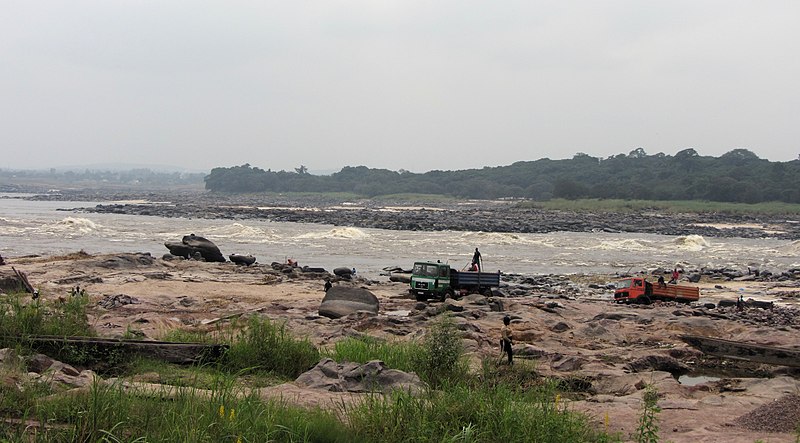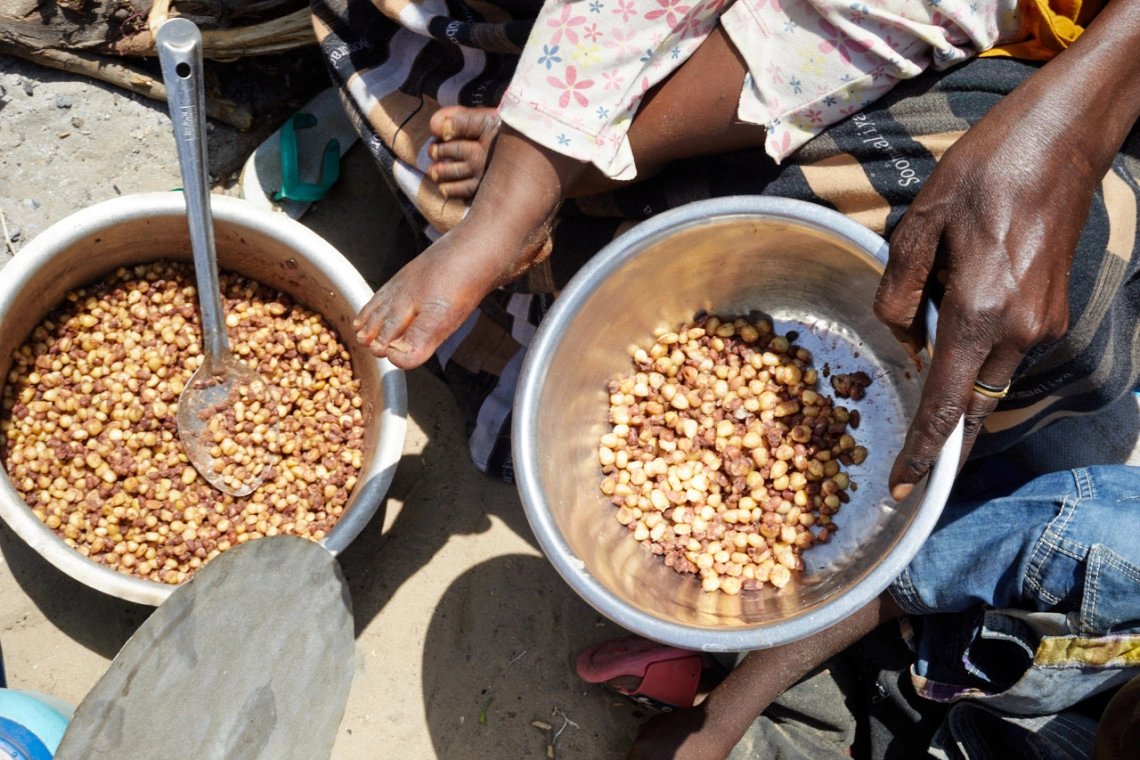Currently, there are 1,210,000 French-language pages on the internet discussing food security in sub-Saharan Africa. Most of these publications are from the FAO (Food and Agriculture Organization of the United Nations) and Western non-governmental organizations. These organizations base their studies on reports and urgent appeals from their partners in national or regional civil societies in sub-Saharan Africa.

These studies are certainly useful for identifying the food needs of African populations. Our field experience and the review of certain publications, particularly those from African civil society organizations, highlight the concern of any informed intellectual who loves their country to constantly alert not only their country's leaders but also to raise awareness within the international community about the urgent issue of food security.
The fight for food security and sovereignty must be pursued both upstream and downstream by restoring a democratic rule of law in each African country. For patriotic Africans, all foreign states and governments that directly or indirectly support dictatorships on the African continent are considered sworn enemies.
Additionally, the wars observed in some African countries are often not their own but rather conflicts instigated and sustained by certain powers to systematically loot the natural resources of the affected countries. On the ground, it is observed that these major powers, after amassing large strategic stocks of raw materials looted from Africa, shamelessly transform into the rescuers of the victim countries.
The Case of the Democratic Republic of Congo
In the vast country of the Democratic Republic of Congo (DRC), which spans 2,245,000 km² and is the third largest in Africa after Sudan and Algeria, the focus should not be on food insecurity but rather on how to enhance food security. Before 1960, the international community never provided food aid to the DRC. Instead, this country welcomed populations from neighboring countries suffering from cyclical ethnic wars, famine, and resulting diseases.

Until 1965, the DRC generated 60% of its foreign exchange earnings from agricultural exports, with the remainder from mineral exports. Notably, 60% of the DRC's area is covered by dense forests, 3.5% by water bodies (15 lakes totaling 180,000 km² and numerous major rivers totaling 20,000 km of banks, etc.).
The agricultural potential is vast, with huge expanses of arable land exceeding 80 million hectares, of which only 1% (800,000 km²) is cultivated. The vegetation can support livestock of up to 40 million cattle. The lakes are rich in fish, yet no industrial fishing operations have been established. Scientific studies on the fish species in Lake Tanganyika (32,900 km²), the most fish-rich lake globally, reveal abundant fish at various depths (up to 1,433 meters, the second deepest lake in the world). The abundance of fish, particularly sardines, justifies projects to establish canneries in Uvira/South Kivu and acquire industrial fishing boats for the Congolese part of the lake. These projects, part of the objectives of the former International Association for the Industrialization of the Northeast of the DRC, also justified the construction of the Kisangani-Bukavu-Uvira national road to enable the transport of fish in refrigerated trucks to the Oriental Province, Equateur, and Kinshasa.
The country easily produces food crops such as bananas, cassava, rice, maize, sorghum, beans, soybeans, peanuts, yams, sweet potatoes, potatoes, barley, millet, taro, various fruits (mangoes, avocados, pineapples, citrus, passion fruit), and many others. A variety of European vegetables grow in North and South Kivu, meeting the needs of urban centers. Only vineyards do not thrive there. The vast natural pastures in the high plateaus of South and North Kivu can support livestock sufficient to meet the meat needs of all provincial capitals.
As for perennial crops, the DRC has palm oil, Arabica and Robusta coffee, tea, cocoa, rubber, cotton, papaya, lemongrass, sugarcane, tobacco, quinine, and pyrethrum. During the colonial period (1885-1960), Belgium prioritized perennial crops and mineral exploitation with an abundance of cheap labor. Improved seed distribution to farmers began systematically only in the mid-1950s.
Post-independence governments have made little effort to address this situation. Farmers, who constitute 80% of the population, are largely left to their own devices, using degenerated seeds. As a result, they harvest significantly less—only 350 kg of rice per hectare instead of the potential 3,500 kg with improved seeds. If some farmers manage to sustain their crops, it is thanks to the support of NGOs and civil society organizations. This crucial work for the health and economy of the majority should be a top priority for the government, which must respect human rights for any national development.
Now that the DRC has freely and democratically elected its leaders and representatives in the political institutions of the Third Republic, starting December 6, 2006, the state must quickly revive its agricultural activities. This includes:
- Conducting a comprehensive population census, province by province, to replace unreliable estimates with accurate statistics.
- Reviving all agricultural research centers and stations, providing them with adequate resources and competent personnel trained by national and international universities. These state agronomic centers, once renowned, include:
- Cotton: Gandajika, Bambesa, Boketa (Kasaï Oriental, Oriental, Equateur)
- Palm Oil: Yangambi (Oriental)
- Cocoa: Yangambi, Bongabo
- Rice: Yangambi, Gandajika, Bambesa, Boketa, Loeka, Mukumari (Kasaï Oriental, Equateur, Oriental)
- Soybeans: Gandajika, M’Vuazi, Boketa (Kasaï Oriental, Bas-Congo, Equateur)
- Beans: Mulungu, M’Vuazi (South Kivu, Bas-Congo)
- Maize: Gandajika, Mulungu, Boketa, Bambesa (Kasaï Oriental, South Kivu, Equateur)
- Fruits: Yangambi, M’Vuazi (Bas-Congo)
- Peanuts: Bambesa, M’Vuazi, Gandajika, Boketa (Equateur, Bas-Congo, Kasaï Oriental, Equateur)
- Rubber: Yangambi, Bongabo, N’Gazi, Mukumari (Equateur, Oriental)
- Robusta Coffee: Yangambi, Bongabo, Bambesa, Kondo (Equateur)
- Arabica Coffee, Tea, Pyrethrum: Mulungu
- Sorghum, Millet: Gandajika, Kipopo, Mulungu
- Livestock: Yangambi, Nioka, Gabu, Mount Hawa, M’Vuazi, Mulungu, Kipopo, Gandajika (Oriental)
- Forestry: Yangambi, Kipopo, Mulungu, Nioka, Bambesa
- Encouraging the private sector, including local and foreign NGOs, to complement and supplement government efforts in agricultural development.
- Restoring meteorological stations and developing agricultural calendars for farmers, providing them with improved seeds on time, and ensuring continuous support from experienced agronomists.
- Enforcing a law banning the use of GMOs (Genetically Modified Organisms) in the country, as the DRC does not need them due to its vast arable lands and to avoid dependency on Western companies producing GMOs. This is a form of neocolonialism worse than the colonization experienced between 1885 and 1960-1965. Sub-Saharan African countries must arm themselves against hunger by ensuring food security and sovereignty. Therefore, governments must allocate significant portions of their budgets to agriculture, education, health, and infrastructure to meet the real needs of their populations.
The Capacity of the DRC to Ensure Food Security
Reviewing over 50,000 French-language pages on the internet about the critical issue of food security in the DRC proves that this large country has lost its former status as a major producer and supplier of primary foodstuffs for its own population and neighboring countries regularly hit by famine. With democratically elected and legitimate leaders accountable to the people, the DRC aims to finally utilize its vast potential after 46 years of independence. This paper proposes an agricultural project demonstrating the DRC's capacity to ensure its food security and export the surplus, focusing on rain-fed rice and maize production.
Before detailing the project, we calculated the country's population based on the identification and enrollment of voters conducted by the Independent Electoral Commission (CEI) from June to December 2005. This operation targeted only potential voters, representing 33% of the population aged 18 and over.
Province |
Voters 2006 |
Non-voters |
Total Population |
01. Bas-Uele |
360.969 |
732.876 |
1.093.845 |
02. Equateur |
536.780 |
1.089.826 |
1.626.606 |
03. Haut-Katanga |
1.307.112 |
2.653.833 |
3.960.945 |
04. Haut-Lomami |
838.242 |
1.701.885 |
2.540.127 |
05. Haut-Uele |
633.886 |
1.286.981 |
1.920.867 |
06. Ituri |
1.399.608 |
2.841.628 |
4.241.236 |
07. Kasaï |
1.055.964 |
2.143.927 |
3.199.891 |
08. Kasaï-Oriental |
891.802 |
1.810.628 |
2.702.430 |
09. Kongo-Central |
1.232.416 |
2.502.178 |
3.734594 |
10. Kwango |
658.032 |
1.336.004 |
1.994.036 |
11. Kwilu |
707.657 |
1.436.758 |
1.144.415 |
12. Lomami |
676.117 |
1.372.722 |
2.048.839 |
13. Lualaba |
553.505 |
1.123.783 |
1.677.288 |
14. Lulua |
982.346 |
1.994.460 |
2.976806 |
15. Maï-Ndombe |
583.548 |
1.184.779 |
1.768.327 |
16. Maniema |
629.894 |
1.278.876 |
